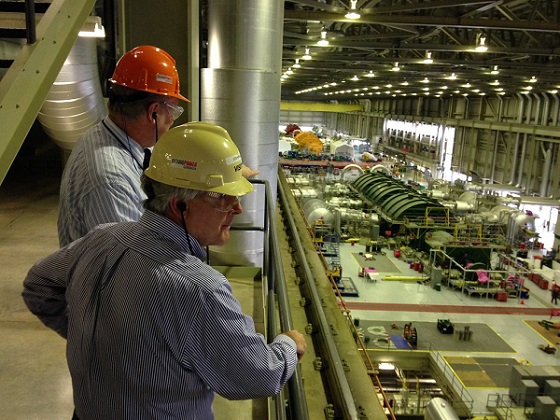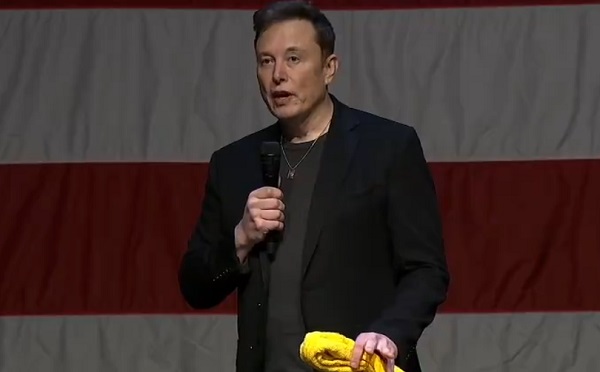Opinion
Red Deer’s A-List talks swimming but the city talks Pickleball

Alberta is forecasting to lead the country in economic growth again next year. Red Deer is expecting thus preparing for more declines in economic growth.
Alberta is expecting population growth of almost 4% next year while Red Deer talks of declining population. Blackfalds leads the country in population growth again and is also, again expanding their recreational facilities. Lethbridge with a population growth making it one of the fastest growing cities in the country is also investing in more recreational facilities.
Red Deer’s A-list came out and interesting enough the number one activity mentioned was swimming and the city is talking about delaying building the Aquatic Centre for another 4 years for finishing in 2025. The A-list also says the favourite location is the Collicutt Centre, located in the south-east corner of the city, the city wants to just replace the downtown pool with it’s inherent traffic and parking problems which would only be multiplied with hoped for population growth.
Red Deer A-list stresses swimming, the city should be facilitating an accelerated expansion of swimming pools but they are delaying the construction of another pool for another 30 years. Fear not remember the city is spending a million on pickle ball courts.
The city hopes to attract 25,000 new residents north of Hwy 11a in the north-west corner of the city. No plans for a swimming pool, they can travel downtown exasperating traffic and parking issues or travel to the Collicutt Centre in the south-east corner of the city which is the preferred choice of the 60% of the city’s recreational population.
Why not, as there will not be any high schools north of the river, anyways, with 5 high schools built and planned for east of 30th Avenue, just beside or down the road from the Collicutt Centre.
2023 will be a pivotal year in Red Deer. Red Deer will be reduced to having only 3 pools.
Collicutt Centre will be celebrating it’s 22 anniversary just as the shovels hit the dirt on a proposed replacement Multi-plex Aquatic Centre.
2001 the Collicutt opened it’s doors for the first time. Red Deer’s population was a hefty 68,308 residents.
1991 Mayor McGhee and council decided it was prudent for Red Deer to have a fourth recreational complex. The population was 58,252 residents and a recreational centre for every 15,000 was the established goal.
2001 Red Deer’s fourth recreational centre opened to a population ratio of a recreational centre for every 17,077 residents. Already behind the target.
There was, as recently as last year that the ratio of 1 indoor ice rink per 15,000 was established as determined for recreational complexes. With that in mind we should have built a new recreational complex with a swimming pool, in 2004 when the population was at 75,923. Giving us 5 recreation centres or 1 for every 15,000 residents as was deemed appropriate. Then again in 2010 when our population was 90,084 we should have built the 6th recreational complex.
If we followed this reasoning we should be planning on opening our 7th recreational complex because our population is 99,832 according to our last municipal census and if we were to grow at 1.2% annually we should hit 120,000 in 2021.
That did not and will not happen. The best we can hope for is a replacement Aquatic Centre to open in 2025.
The ideal goal is one for every 15,000 residents but if we build a 5th recreational complex with an indoor pool then we would have to settle for 1 for every 24,000 residents, which is better than just replacing a pool, as currently planned.
A fifth recreational complex north of hwy 11a would service the residents, expand tourism and kick start development north of 11a.
The current thinking is the city will tear down the downtown recreation centre and build the aquatic centre there. Leaving us with only 4 or 1 recreational complex for every 30,000 residents.
Instead of 7 we would be left with 4 for another 25 years.
What do we do? Councillor Tanya Handley has declared that she cannot support building the aquatic centre downtown with poor parking but would support building it as Councillor Frank Wong has been advocating, north of 11a near Hazlett Lake to kick start development. Newcomer Councillor Michael Dawe would consider moving the aquatic centre as would another.
That gives us 4 councillors but with 8 councillors and the mayor voting on the issue in a year, we need the commitment of 5 to ensure a new pool and not just a replacement.
I am asking all councillors and the mayor to commit to building a new aquatic centre north of 11a. Why now?
The city is a bureaucracy that tends to move slowly and in precise steps. It is always too early then it’s too late. We need commitment now so the city can make the necessary adjustments when necessary. Please commit.
I was on the citizen committee that made the recommendations cited by the city. Those recommendations was made on the premise of (1)an immediate build when (2) no land was available for a new aquatic centre. There is now a delayed construction start and there is lots of land available for a new build.
So while the province and neighbouring communities are investing in recreational facilities and reaping the rewards of economic and population growth why is Red Deer taking the reverse route?
I guess I will learn to play pickle ball.
Catherine Herridge
How X And Joe Rogan Broke The Back of 60 Minutes

| TOP LINE: | |||||||||||||||
| Super consumers of news are flocking to X and other platforms that support independent journalism, diverse voices and embrace transparency. The post election TV ratings abyss is driven both by technology and by the public’s loss of trust in Mainstream media. | |||||||||||||||
| DEEP DIVE: | |||||||||||||||
| To buy MSNBC or not to buy? | |||||||||||||||
| This week’s headline that Comcast will spin off its cable channels underscores the tectonic shift in the media marketplace and how technology is providing the exit ramp for competing platforms. | |||||||||||||||
| When my job as a senior investigative correspondent at CBS News was terminated in February, I took a few months to educate myself about the marketplace because so much had changed since I left Fox in 2019. What I found was genuinely surprising, a little frightening and, oddly, re-assuring for the strength of our democracy. | |||||||||||||||
| You can’t argue with the data. It is compelling. On Election Day, according to @Xdata, the platform boasted record usage of 942 million posts worldwide and 2.2 million hours of watch or listen time over approximately 160k live events. The X data crushed engagement numbers for the mainstream media (MSM.) | |||||||||||||||
|
|||||||||||||||
| By example, a Tucker Carlson interview on X has 35 million engagements. The CBS Evening News has 4.5 million viewers. If I had to choose, I’d take 30 million engagements on X because it represents explosive growth. | |||||||||||||||
|
|||||||||||||||
| The new super consumers of news are flocking to X and other platforms that support independent journalism, diverse voices, and embrace transparency which can strengthen democracy. This is nothing short of an industrial revolution driven both by technology and by loss of trust in corporate media. | |||||||||||||||
| In 2023, Human Rights lawyer Jacob Mchangama wrote about the upheaval and resulting, “elite panic.” | |||||||||||||||
| “Elite panic is this recurring phenomenon throughout the history of free speech, where whenever the public sphere is expanded, either through new communications technology, or to segments of the population that were previously marginalized, the traditional gatekeepers, the elites who control access to information, tend to fret about the dangers of allowing the unwashed mob — who are too fickle, too unsophisticated, too unlearned — unmediated access to information. They need information to be filtered through the responsible gatekeepers and it may be even more dangerous to allow them to speak without adult supervision. That’s a phenomenon that we see again and again. And we’re seeing it play out now on social media. … [Elite panic is] one contributing factor to the free speech recession.” | |||||||||||||||
|
|||||||||||||||
| If you asked me four years ago, if a presidential candidate could skip a 60 Minutes interview, I would have been skeptical. Four years later, candidate Trump bypassed the legacy news magazine and instead, sat down with Joe Rogan. As of this writing, the marathon sit-down viewership reached 51 million views. | |||||||||||||||
| There is no doubt Rogan is a skilled interviewer who can draw out his subjects and deliver huge audiences. Compared to heavily edited network TV reports, the raw, unedited format reveals much about the subject. In politics, the podcast is perfectly suited for the “beer question” which measures a candidate’s authenticity and likability. | |||||||||||||||
| The progressive Harris campaign took a more traditional media approach and came up short. Neither celebrity endorsements which feel less relevant nor a 60 Minutes interview seemed to move the needle. The combined audience of the 60 Minutes Kamala Harris interview and its views on YouTube landed at about 10 million, far less than what Rogan and X delivered. | |||||||||||||||
| The legacy of the Kamala Harris 60 Minutes interview is not her responses but the lingering controversy over the CBS’ interview edit. And that is where the public’s loss of trust in the media comes in. I believe this is another driver of the audience exodus. | |||||||||||||||
| CBS aired two different answers from the Vice President to the same question from correspondent Bill Whitaker about the Israeli Prime Minister apparently ignoring the Biden Administration. | |||||||||||||||
|
|||||||||||||||
| Since, a credible complaint has been filed at the FCC alleging “news distortion” at the network with a reasonable demand that the full, unedited Kamala Harris transcript be released. CBS News has said “it fairly presented the interview to inform the viewing audience and not to mislead it.” | |||||||||||||||
| In the October newsletter, I explained that releasing the full, unedited transcript would resolve these questions. There is ample precedent. | |||||||||||||||
|
|||||||||||||||
| As a senior investigative correspondent at CBS News, I interviewed President Trump at the height of the COVID-19 pandemic. I advocated for and CBS News published the full, unedited transcript. | |||||||||||||||
| The CBS News Trump interview was not a special case. The full, unedited transcript from Attorney General Bill Barr’s 2019 interview with CBS chief legal affairs correspondent Jan Crawford was also shared by the network. And more recently, 60 Minutes released the full unedited transcript of its interview with Fed Chair Jerome Powell. | |||||||||||||||
| If the current trend continues, in the 2028 election cycle, the broadcast networks will firmly take a back seat to podcasts, town halls, and investigative journalism on X. For independent journalists and small digital newsrooms, the challenge is developing revenue streams that are viable. | |||||||||||||||
| In February, I was not comforted by the analogy that losing my corporate reporting job was like getting pushed off the Titanic when there were still seats in the lifeboats. In retrospect, I wonder if it may turn out to be more accurate than I initially thought. | |||||||||||||||
| After turning down job offers for which I remain grateful, I began building the Catherine Herridge Reports brand on X and in the newsletter marketplace. These platforms are the new media beachheads. Content is King. | |||||||||||||||
| I’ll have more to say about the future of journalism and why journalism is called a profession for a reason. Look for exclusive new content on media accountability in the coming days! | |||||||||||||||
| Thank you for subscribing to our newsletter and supporting independent investigative journalism! |
Energy
Is Canada the next nuclear superpower?

From Resource Works
The rise of AI and other technologies have pushed energy demand through the roof, and Canada can help power that with nuclear.
Good to see Prime Minister Justin Trudeau pushing nuclear power as a key contributor to meeting the world’s soaring demand for electricity.
“The energy consumption necessary around AI (artificial intelligence) nobody has properly understood yet,” he said. “We have stepped up big time on nuclear.”
He cited Canada’s uranium reserves and progress in building both full-scale CANDU reactors and small modular reactors (SMRs). He said other countries need to “skate where the puck is going” on cleaner energy sources.
“We know that if we are going to meet our net-zero targets around the world, and certainly in this region, nuclear is going to be really part of the mix.”
He stopped short of saying Canada would build more major nuclear reactors for domestic use but spoke about the development of SMRs. Ottawa has previously stated it wants to become “a global leader in SMR deployment.”
Meanwhile, International Trade Minister Mary Ng said Canada is launching a gateway for nuclear development in the Asia-Pacific region. She said growing Pacific Rim economies will face increasing demand for electricity, not just to curb emissions.
“All this followed CANDU licence-holder AtkinsRéalis announcing a “multi-billion-dollar” sale of two CANDU reactors to Romania, the first to be built since 2007. The federal government contributed $3 billion, the company said.
And in one of our Resource Works Power Struggle podcasts, energy journalist Robert Bryce said: “We’re seeing the revitalization of the nuclear sector… There are a lot of promising signs.”
Also from Bryce: “Forty-seven per cent of the people on the planet today live in electricity poverty. There are over three billion people who live in the unplugged world; 3.7 billion who live in places where electricity consumption is less than what’s consumed by an average kitchen refrigerator.”
Policy Options magazine notes how Canada and 21 other countries signed a 2023 pledge to triple nuclear energy capacity by 2050, and says: “The reality would appear to be clear: there is no feasible net-zero future without the deployment of new nuclear power.”
For Canada, it adds: “We have an opportunity to expand our global status, but this requires overcoming years of policy inaction while other nations have modernized their nuclear strategies. To triple our nuclear capacity by 2050, we need clear priorities and unwavering political commitment.”
Earlier this year, François-Philippe Champagne, federal minister of innovation, science and industry, said nuclear power needs to grow for the world’s renewable-energy economy.
“Nuclear, definitely. For me, we have to look at hydro, we have to look at nuclear, we have to look at small modular reactors, we have to look at wind, we have to look at solar.”
Jonathan Wilkinson, energy and natural resources minister, promised to expedite the approval process for new Canadian nuclear projects.
Canada now gets about 15% of its electricity from nuclear generation, mostly from reactors in Ontario.
But the last nuclear reactor to come into service in Canada was at the Darlington station, east of Toronto, back in 1993. No new nuclear project has been approved since then, but multi-million-dollar upgrades are underway at existing Ontario plants.
Heather Exner-Pirot of the Macdonald-Laurier Institute and Jesse McCormick of the First Nations Major Projects Coalition see SMRs and micro-reactors as a plus for rural and remote areas of Canada that now rely on diesel to generate power. Some First Nations are also interested.
However, the two commentators point out that nuclear developers will need Indigenous support and will have to “provide meaningful economic benefits and consider Indigenous perspectives in project design.”
Now, the Wabigoon Lake nation in Ontario has stepped up as a potential host to a deep underground facility for storing nuclear waste.
As Canada looks to SMRs to meet electricity demand, our country also hopes to sell more uranium to other nations—perhaps with a little help from Russia.
In October, Russian President Vladimir Putin proposed restrictions on Russian uranium exports in retaliation for Western sanctions on Russian oil, gas, and LNG.
That boosted hopes for increased exports of Canadian uranium.
Canada, once the world’s largest uranium producer, is now the world’s second-largest, behind Kazakhstan, and accounts for roughly 13% of global output.
Putin’s threat gave more momentum to the plans underway by NexGen Energy for its $4-billion Rook 1 uranium mine in Saskatchewan.
The Canadian Nuclear Safety Commission has completed its final technical review of the project. Next comes a commission hearing, followed by a final decision on approval.
NexGen is working on detailed engineering plans in preparation for full construction, pending federal approval.
NexGen could push Canada to become the world’s largest uranium producer over the next decade. Other companies are rushing to Saskatchewan to start exploration projects in the Athabasca region, while existing players are reopening dormant mines.
All this follows the commitment by nearly two dozen countries in 2023 to triple their nuclear-energy output by 2050.
And so Britain’s BBC News topped a recent roundup on nuclear power with this headline: “Why Canada could become the next nuclear energy ‘superpower’.”
-

 Brownstone Institute1 day ago
Brownstone Institute1 day agoThe Most Devastating Report So Far
-

 Economy2 days ago
Economy2 days agoCOP 29 leaders demand over a $1 trillion a year in climate reparations from ‘wealthy’ nations. They don’t deserve a nickel.
-

 Censorship Industrial Complex2 days ago
Censorship Industrial Complex2 days agoAnother Mass Grave?
-

 ESG19 hours ago
ESG19 hours agoCan’t afford Rent? Groceries for your kids? Trudeau says suck it up and pay the tax!
-

 Alberta1 day ago
Alberta1 day agoMAiD In Alberta: Province surveying Albertans about assisted suicide policies
-

 Energy2 days ago
Energy2 days agoOttawa’s proposed emission cap lacks any solid scientific or economic rationale
-

 Alberta2 days ago
Alberta2 days agoOn gender, Alberta is following the science
-

 International20 hours ago
International20 hours agoElon Musk praises families on X: ‘We should teach fear of childlessness,’ not pregnancy











